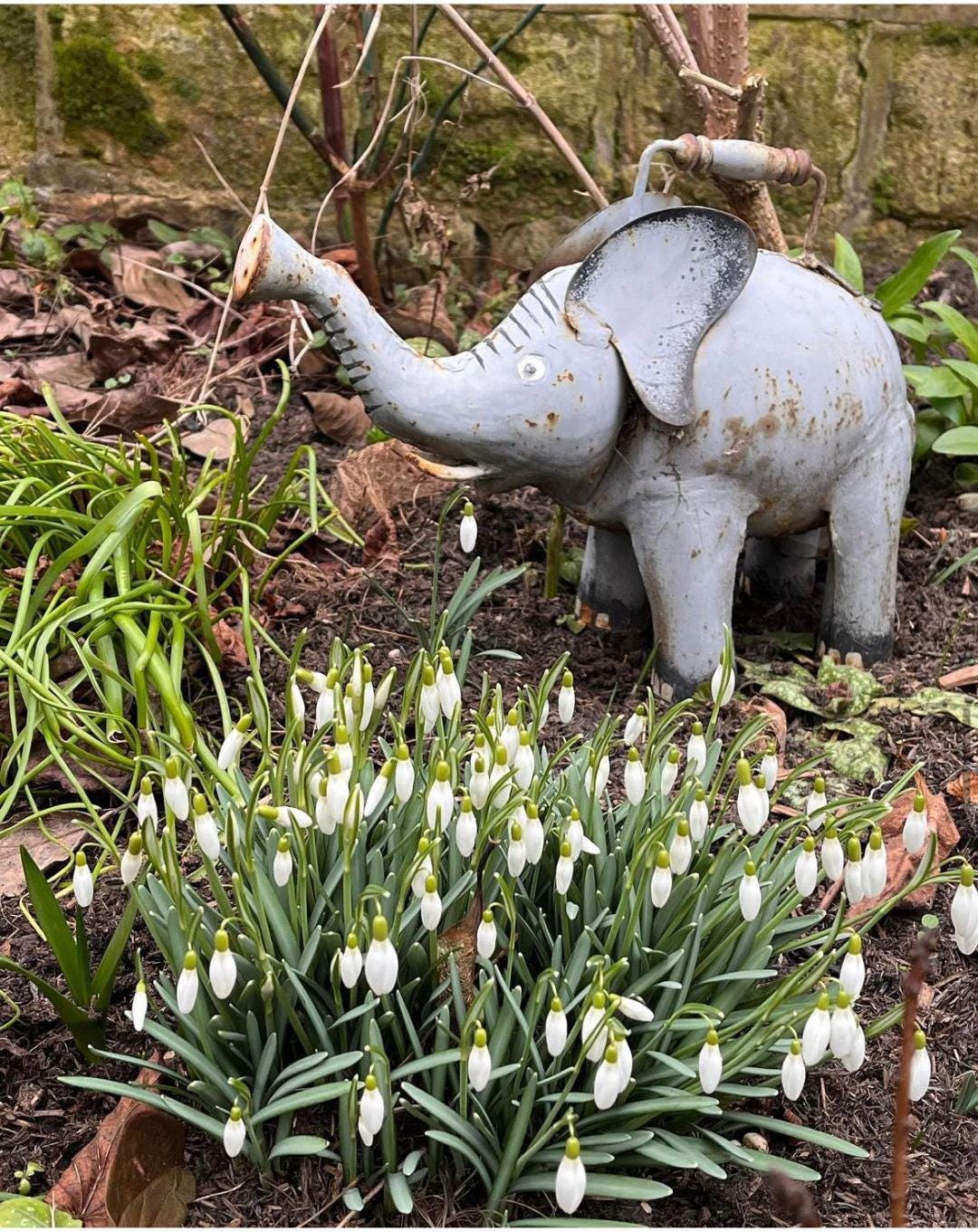Noticing snowdrops.
I learnt today that the Swiss name for snowdrops is Amselblumli, the blackbird flower because they appear as the blackbirds begin to sing again in late winter.
‘You have to keep snowdrops on the move’ the wise words of a fabulous women who’s garden and hens I much admire whenever I cycle by them. I did so this evening and the snowdrops (since I began writing this) have now all been replaced by the most incredible hellebores stood quite tall now above the former snowdrop white party appearance.
Is it me or did the snowdrops just turn to the mush of wet paper within weeks of this years wettest of Februarys? This lady gardener of snowdrops has a picture postcard farmhouse sized cottage with a surrounding garden that is the envy and I’d imagine an inspiration of many who pass it. So much is the looking that she’s built in part (by herself) a high stone wall for privacy. I don’t blame her, she’s not of the Instagram or magazine gardening world so why should she have the likes of me peering in. I was permitted kindly to take photos of her rare breed Braekel chickens whom are of a great age of about 9 years and look very striking pecking about like zebra feathered creations a few years ago now.
This front garden with soft and generously carved out borders on both sides has been like a blanket of spring cheer within what feels like a bog for several weeks. The lawn sprinkled with the confetti of soft lavender, watercolour like crocus and the beds a white tapestry of nodding snowdrops clumps some single others double, large bells small bells all a gentle nod silently bowed each one it’s own perfect pendulum and what a sight so many amongst emerging hellebores and primulas that give just the first hints of yellows and blushed, rosy cheeked pinks all interrupted by beautifully mossed over stepping stones to a backdrop of some clipped Alice in wonderland worthy topiary, a true spring garden if not in truth winter garden of the years first hardy flowers.
Snowdrops, even the common varieties are expensive to buy as potted bulbs when they are in flower and yet they multiply within their clumps readily and in a suffocating manner if they are not divided up often.
The bulbs grow tightly packed and eventually on top of each other, a design of nature that needs the help, quite badly of the human hand to tear these clumps up and replant them so that their bulbs can breathe and flower well, entire great drifts of snowdrops can be created within an afternoon and if they are happy in their location they’ll return for decades and decades. In nature, a snowdrop seed head lies flat on the earth and hopes for an ant to come and take it further afield, even creating an ant attractive oil for this purpose!
This human dividing of clumps however, should be done while the bulbs are in active growth thus do either it as soon as you see the bulbs peeking out of the soil or once they have finished flowering but not when they are in full flower because you’ll dirty the perfectly white pendulums with mud, which is surely a pity? I have done this in my Grandmar Sheila’s garden this late winter and so created, out of one very large dumpy clump of snowdrops, what must be perhaps forty little trios of bulbs that I’ve spun about her flower bed , throwing each little clump across the bed and then planting them where they have landed so to give a naturalised appearance. Snowdrops are especially happy in shady gardens taking advantage of the light before trees above them awaken and block out the light and their bulbs enjoy the fertility of the decaying leaf litter provided each autumn.
The leaves of the divided up snowdrop bulbs are kept on the bulbs vitally so they then die down and feed the bulbs to ensure flowers come next year. As the emerging perennials and later spring bulbs sprout, the fine fading leaves of the little snowdrops are soon camouflaged out of the way by more youthful greens. This is all exciting and so my Grandmar Sheila at 91, has got to hang on until next spring and the next to see the snow sprinkled results of this effort!






The snowdrops were sooooo welcome this year, little dots of gleaming white amongst the mud and leaves. Mine were actually ok this year - lots are sheltered under trees and surprising positions under trees where they just decided to grow. But the crocuses - they turned to mush instantly, despite their daily ‘tickling’ from me to shake off the raindrops. To no avail: the water weighed down their flowerheads and pushed them into the soil, where they lay, fading, turning into wet tracing paper, and eventually a slimy memory of what they’d been. It happened so quickly too.
Until we can eat snowdrops my interest will always be impaired BUT they were so especially very welcome this year after such a grey wet winter